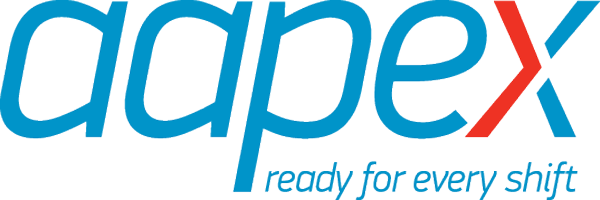Road to aapex: The journey starts here
Oct. 30, 2024
The automotive aftermarket often celebrates its long and historic legacy—manufacturers that engineer solutions, distribution channels that crisscross the country, parts stores and repair shops that keep America moving. Today, the aftermarket is paving the foundation of a new legacy—dreaming up innovation in new and existing powertrains, leveraging digitally driven solutions and forging stronger relationships. This year’s Road to AAPEX traverses the crossroads where history meets ingenuity to drive the industry down the road toward its future legacy.
Episode 1
Babcox Media’s Joe Keene, an ASE-certified technician, navigates the automotive aftermarket landscape, starting at the Crawford Museum in Cleveland, Ohio. A location rich in automotive history, the Crawford Museum displays a parallel path between early automotive designs and modern vehicles that shows off the continuous advancements that have shaped the industry.
Meanwhile, David Sickels, Babcox Media editor, will delve into the aftermarket and the significant contributions of independent companies within the supply chain. He’ll travel the country to chart the history of the aftermarket, the key players, and the processes involved in manufacturing automotive parts. He will interview key figures in the industry and examine the processes that bring aftermarket parts from conception to market, providing valuable insights into the operational aspects and historical development of the aftermarket sector.
Then there’s Babcox Media’s Scott Shriber, automotive aftermarket guru, who will focus on the logistics and distribution chains that deliver parts to local technicians and repair shops. He’ll explore the history of parts distribution, tracing its growth and evolution into the complex system it is today while providing a detailed look at how distribution networks have adapted to meet increasing demand and technological advancements, ensuring parts are delivered efficiently and reliably.
Of course, it all ends where the rubber meets the road—the hard-working automotive repairs shops that put the parts and solutions to work to get customer vehicles back on the road. Joe Keene will take us on a tour of the automotive aftermarket front line to talk with shop owners and technicians about how they’re innovating within their own businesses to keep America moving.
Episode 2
“You can have any color as long as it’s black.” Henry Ford’s famous words may have stood the test of time, but it’s the automotive aftermarket that took the first half of that “any color” quote and ran with it. Paint technology has come a long way from the early days of black-only Model Ts to today’s diverse color palettes and advanced formulations.
The Road to AAPEX journey through automotive paint history takes us to Transtar Autobody Technologies in Brighton, Michigan, to discuss the various stages of paint technology development. Babcox Media’s Scott Shriber, automotive aftermarket guru, charts the automotive paint evolution from the rudimentary varnishes and lacquers to the sophisticated catalyzed systems and eco-friendly water-based paints.
Meanwhile, Joe Keene, Babcox Media’s ASE-certified technician, heads into the paint booth for a headlight restoration that involves a waterborne degreaser and clear coat application to restore clarity and protect headlights, which can be a valuable service for aftermarket professionals.
Episode 3
In the latest episode of “Road to AAPEX,” WIX Filters gives viewers a behind-the-scenes look at its manufacturing process and highlights the brand’s rich history in oil filtration. Filmed at WIX’s Gastonia, North Carolina, facility, the episode dives into the evolution of oil filters from the early 20th Century to modern times. Prior to 1923, engines either had no oil filters or used ineffective mesh screens. The introduction of canister-type filters in the 1920s and the development of the spin-on oil filter in the 1950s revolutionized engine maintenance.
WIX Filters, the pioneer behind the spin-on oil filter, now produces a wide range of filtration products, from lawnmower filters to those used in locomotives. This episode features a tour of WIX’s manufacturing plant, where the intricate process of creating oil filters is detailed, from pleating the filter media to assembling and testing the final product. The facility employs around 600 people and emphasizes quality control at every step to ensure the filters meet industry standards.
Vice President of Sales and Marketing, Daryl Benton, discusses WIX’s commitment to innovation, particularly in response to the evolving automotive landscape, including electric vehicles (EVs). WIX is adapting by developing products for the unique needs of EVs, such as cabin air filters and transmission fluid filters.
The episode also touches on WIX’s commitment to sustainability, with efforts to make its plants zero-landfill.
The company’s legacy in motorsports, particularly NASCAR and IndyCar, is also highlighted, showcasing WIX’s role in pushing the boundaries of filtration technology in high-performance environments. This glimpse into WIX’s operations underscores its role as a leader in the automotive aftermarket industry.
Episode 4
Automotive repair has come a long way, evolving from its humble beginnings in blacksmith shops to the high-tech environments of today’s repair centers. What once involved manual labor and oil-stained books now benefits from advanced diagnostic systems and streamlined processes that make life easier for technicians and shop owners alike.
Technicians at Automotive Customs in Valley View, Ohio, for example, no longer rely on cumbersome paper manuals or scattered notes. Instead, they work with comprehensive digital systems that allow them to quickly diagnose issues and identify common faults in vehicles. Follow Joe Keene, an ASE-certified automotive technician, as he goes into the bays of Automotive Customs to see how technicians seamlessly move from diagnosing fault codes to ordering parts and estimating labor times in real time.
